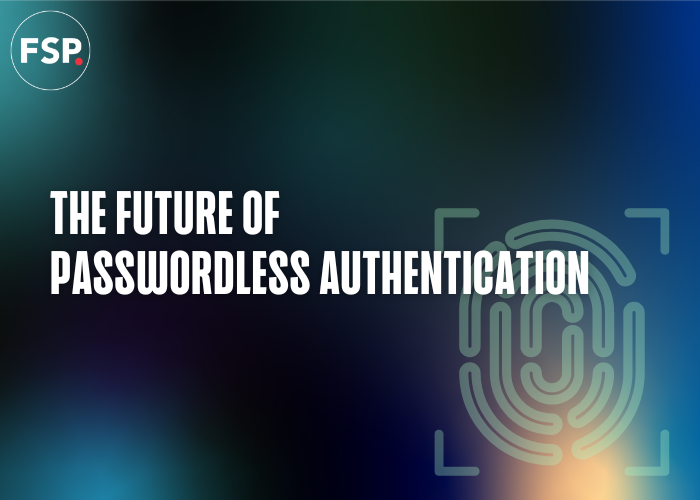Written by Jignesh Tank, Senior Security Consultant
As the world becomes increasingly digital, the threat of cyber-attacks has become a harsh reality for businesses of all sizes. Traditional password-based authentication is not enough in this modern era of AI innovations and growing concerns surrounding cyber threats. Passwords, no matter how complex, can be hacked or stolen with little effort. According to Forbes Advisor, 46% of Americans reported having their passwords stolen in 2023. Businesses must be proactive in their cyber security approach to avoid potential security breaches and adopt the benefits of newer, more secure forms of authentication. We have all experienced the rise of MFA, still an important part of a layered security approach, but attackers are finding ways to circumvent it. Constant MFA prompting isn’t always a fantastic user experience, which helps the attackers in some ways, with users experiencing ‘MFA fatigue’.
That’s why businesses must continually evolve to meet the market’s demands with the most effective form of authentication – Passwordless Authentication.
What is Passwordless Authentication?
It is an authentication method of verifying a user’s identity without using a password. Instead, it uses a variety of other factors, such as biometric data (fingerprint or facial recognition), hardware tokens, and one-time codes to authenticate a user. It eliminates the need for remembering and managing multiple passwords, which can often be a weak link in security, and increasingly use cryptographic keys which a user cannot be tricked or phished into giving away like a password or one-time code.
It is not a new concept of authentication, but it has gained momentum in recent years due to the increasing number of data breaches and technological advancements. According to a survey by FIDO Alliance and LastPass 92% of businesses are either currently using or planning to implement passwordless authentication for their workforce.
The transition to this innovative authentication may seem daunting for businesses, but its numerous benefits make it a worthwhile investment. Some of these benefits are:
Increased Security: Passwords can be compromised or hacked, leaving sensitive business data vulnerable. Businesses can eliminate this risk by using cryptographic keys-based authentication such as FIDO2/Passkeys which cannot be stolen or phished by attackers.
Improved User Experience: Passwords can be a hassle for employees or customers, with the constant need to remember and update them. Organisations that have already implemented newer forms of authentication no longer have to worry about forgetting or resetting passwords, resulting in a lower friction, more efficient login process, and improved security and user experience.
Cost Savings: The cost of managing and resetting passwords can add up for businesses. By transitioning to a passwordless authentication method, companies can save on the costs associated with password management and focus on other business areas.
Compliance: Modern authentication can help organisations comply with various regulations such as GDPR, HIPAA and PCI DSS, which require strong authentication to protect sensitive data.
Scalability: Passwordless solutions scale well – allowing users to authenticate securely to multiple systems without the complexity and risks of managing multiple passwords, even with password managers.
Eliminating passwords can greatly enhance the security of accounts, reduce operating costs, and improve the user experience.
Consider the following security methods currently in use:
FIDO2 (Fast Identity Online): Major tech companies such as Google, Microsoft, and Intel support this open authentication standard. It uses public-key cryptography and enables users to authenticate to websites and services using biometric factors such as fingerprints, facial recognition, or physical security keys such as YubiKey.
Passkeys: Passkeys use public key cryptography and provide a user-friendly replacement for passwords that are phishing-resistant. Prominent platform providers like Google, Apple and Microsoft have enabled passkey synchronisation with end-to-end encryption platforms which is an example of synced passkeys. It is essential to monitor security of these cloud synchronisation platforms.
Biometric Authentication: This type of authentication uses unique physical characteristics of an individual, such as your fingerprint, facial recognition or iris scan. Biometric data is unique to everyone, and hard to lose, making it an effective form of authentication. Although concerns about AI and deepfakes are beginning to challenge these assumptions about biometrics.
Magic link: Magic link-based authentication generates a unique link and sends it to the user’s email. The user must click on the link to verify their identity and access the system.
Mobile-Based Authentication: This method uses mobile devices to verify a user’s identity. For example, a user could use their mobile phone to scan a QR code or receive a push notification to verify their identity.
Conclusion
Passwords have had their day. They are inconvenient for humans to manage, vulnerable to attack, and now we do have good alternatives. Modern authentication solutions such as passkeys and FIDO2 offer a more convenient and more secure alternative to protect our digital identities and all the things they enable us to do.
At FSP, we understand the importance of protecting digital identities and the significant impact it can have on your business. We are committed to helping organisations on their journey towards adopting improved and secure ways of authentication. Our team of experts have the knowledge and experience to guide companies through the implementation process, ensuring a smooth transition and maximising the benefits. Please contact us if you would like more information on how we can support you in modernising your authentication and securing your digital identities.
Read more about passkeys – Passkeys & Zero Trust | CSA (cloudsecurityalliance.org)
Passkeys (Passkey Authentication) (fidoalliance.org)
Device Security Guidance – NCSC.GOV.UK
The Benefits Of Passwordless Authentication And How To Choose The Right Method (forbes.com)

